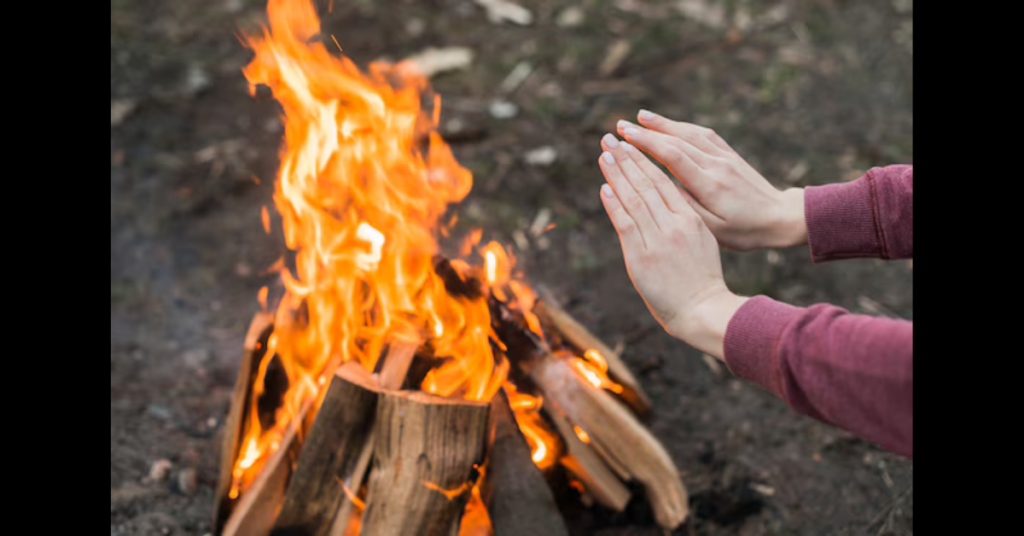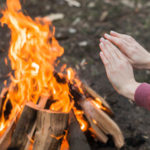BlueFire Wilderness Therapy is one of the many wilderness programs in the United States designed to provide therapeutic intervention for troubled adolescents and teens. Founded by seasoned professionals in the fields of psychology and wilderness therapy, BlueFire aims to help young individuals struggling with various emotional, behavioral, and mental health challenges, including substance abuse, trauma, anxiety, depression, and academic difficulties. Through its outdoor adventure-based programs, BlueFire focuses on a holistic approach to healing, blending traditional therapy with outdoor activities.
However, despite its well-intended mission, BlueFire Wilderness Therapy has found itself embroiled in legal disputes over the years. A number of former participants and their families have filed lawsuits against the organization, alleging negligence, abuse, mistreatment, and even personal injuries. These lawsuits have drawn attention to the broader issue of oversight in the wilderness therapy industry and have sparked debates about the safety, efficacy, and regulation of such programs. In this article, we’ll explore the history of BlueFire Wilderness Therapy, the key aspects of the lawsuits filed against them, the broader implications for the wilderness therapy industry, and potential reforms that could be introduced to mitigate future risks.
I. The History of BlueFire Wilderness Therapy
BlueFire Wilderness Therapy was founded with the goal of using outdoor experiences to facilitate personal growth and behavioral change in young people. It is based on the premise that being removed from the distractions of everyday life and immersed in nature allows individuals to reflect on their choices, improve emotional regulation, and develop essential life skills. The program is designed to include a combination of traditional therapeutic modalities, such as individual and group therapy, alongside experiential activities like hiking, backpacking, camping, and wilderness survival skills.
Participants are often referred to BlueFire by parents, therapists, or educational consultants when traditional methods of therapy have proven ineffective. The program caters to adolescents between the ages of 11 and 17 who may be struggling with various issues, including defiance, oppositional behavior, substance abuse, school refusal, and social isolation. BlueFire offers individualized treatment plans, which are customized based on the participant’s unique needs and challenges.
II. Lawsuits and Legal Issues Surrounding BlueFire Wilderness Therapy
While BlueFire’s therapeutic mission appears noble on the surface, a number of lawsuits filed by former participants and their families have raised serious concerns about the program’s methods, safety, and oversight. These lawsuits typically fall into several categories, including negligence, abuse, wrongful death, personal injury, and emotional distress. Below, we will delve into some of the most common allegations made against BlueFire Wilderness Therapy and similar wilderness programs.
A. Allegations of Negligence
Many lawsuits against BlueFire and similar wilderness programs have centered on allegations of negligence. In these cases, plaintiffs often argue that the staff at BlueFire failed to provide appropriate care and supervision, leading to harm or injury. For example, in some instances, participants have sustained injuries during outdoor activities such as hiking, camping, or rock climbing, and families have claimed that these injuries were preventable if proper safety protocols had been followed.
Moreover, there have been allegations that BlueFire failed to screen participants thoroughly before admitting them to the program. Some plaintiffs have argued that certain adolescents with preexisting medical or psychological conditions should not have been enrolled in a wilderness therapy program due to the physically demanding nature of the program, which can exacerbate underlying health issues.
B. Claims of Abuse and Mistreatment
One of the most serious allegations against BlueFire involves claims of abuse and mistreatment. Some former participants have described experiences that they believe crossed the line from therapeutic intervention to abusive behavior. Allegations of verbal abuse, emotional manipulation, and even physical restraint have been reported in some lawsuits.
In certain cases, participants have claimed that they were subjected to humiliating or degrading treatment as part of the therapy process. This has included being denied access to basic necessities such as food, water, or shelter, or being forced to endure extreme weather conditions without adequate protection. In other cases, participants have described a lack of medical attention when needed, which they argue worsened their physical or mental health conditions.
C. Personal Injury Claims
Personal injury lawsuits have also been filed against BlueFire Wilderness Therapy, with plaintiffs seeking compensation for injuries sustained during the program. These injuries may result from accidents that occur during outdoor activities or from alleged mistreatment or neglect by staff members.
For example, participants have reported injuries ranging from broken bones and sprains to more severe injuries such as heatstroke or dehydration. In some instances, families have claimed that these injuries were caused by the failure of staff to provide appropriate supervision or to follow safety protocols. These personal injury claims often seek damages to cover medical expenses, pain and suffering, and other related costs.
D. Wrongful Death Lawsuits
While relatively rare, wrongful death lawsuits have been filed against wilderness therapy programs, including BlueFire. In these tragic cases, families allege that the program’s negligence or misconduct directly contributed to the death of a participant. This could include failure to address medical emergencies, lack of proper supervision, or inadequate safety measures during wilderness activities.
Wrongful death cases have had a significant impact on the reputation of wilderness therapy programs, as they bring into sharp focus the potential risks of enrolling vulnerable adolescents in such programs. In these cases, families seek financial compensation for their loss, but they also often push for greater accountability and reform within the wilderness therapy industry.
E. Emotional Distress and Psychological Harm
In addition to physical injuries, some lawsuits have focused on the emotional and psychological harm experienced by participants during their time at BlueFire Wilderness Therapy. Plaintiffs in these cases may allege that the program’s methods caused lasting emotional trauma or exacerbated preexisting mental health conditions.
For instance, participants have reported feeling isolated, anxious, or emotionally manipulated while enrolled in wilderness therapy programs. In some cases, families claim that their children emerged from the program with more severe mental health challenges than when they entered. These claims of emotional distress seek damages for the long-term psychological impact of the program on the participants.
III. The Legal Framework for Wilderness Therapy Programs
Wilderness therapy programs like BlueFire operate in a legal gray area in many states, as there is no standardized federal regulation overseeing the industry. This has led to inconsistent levels of oversight, with some programs operating under strict state regulations while others face minimal scrutiny. The lack of standardized oversight is one of the primary reasons lawsuits against wilderness therapy programs have become more common.
A. Regulation and Licensing
Wilderness therapy programs are often classified as residential treatment centers or therapeutic boarding schools, which means they must adhere to certain state licensing requirements. However, the specific licensing requirements and regulations vary widely from state to state. In some states, wilderness therapy programs are subject to stringent regulations that include regular inspections, staff training requirements, and safety protocols. In other states, however, the regulations may be more lax, with fewer oversight mechanisms in place.
One of the challenges in regulating wilderness therapy programs is that they often operate in remote, outdoor settings, which makes it difficult for state authorities to monitor their activities closely. Additionally, the nature of wilderness therapy, which involves outdoor adventure activities and a degree of physical exertion, creates unique risks that are not typically encountered in traditional therapeutic settings.
B. Duty of Care and Negligence
In lawsuits against BlueFire and similar programs, plaintiffs often argue that the program failed to meet its duty of care to participants. In legal terms, duty of care refers to the obligation of an organization or individual to act in a reasonable and responsible manner to prevent harm to others. When a wilderness therapy program enrolls a participant, it assumes a duty of care to ensure that the participant’s safety and well-being are prioritized.
To establish negligence in a lawsuit, the plaintiff must demonstrate that the program breached its duty of care, that the breach directly caused harm or injury to the participant, and that the injury resulted in damages. In the context of wilderness therapy programs, a breach of duty could include failing to provide adequate supervision, not following safety protocols, or neglecting to provide medical attention when needed.
C. Informed Consent and Waivers
Many wilderness therapy programs, including BlueFire, require participants and their families to sign waivers or consent forms before enrolling in the program. These documents typically outline the risks associated with the program, such as physical exertion, outdoor activities, and the potential for injury. By signing these forms, families are acknowledging that they understand and accept the risks involved.
However, in some lawsuits, plaintiffs argue that the waivers were not fully explained or that they did not fully understand the extent of the risks when they enrolled their child in the program. Additionally, some argue that even if a waiver was signed, the program still has an obligation to act responsibly and cannot use the waiver as a shield against all forms of liability.
IV. Broader Implications for the Wilderness Therapy Industry
The lawsuits filed against BlueFire Wilderness Therapy are not isolated incidents but part of a broader trend of legal challenges facing wilderness therapy programs across the United States. These legal disputes highlight some of the key issues and challenges facing the industry, including concerns about safety, regulation, and accountability.
A. The Need for Greater Oversight and Regulation
One of the key takeaways from the lawsuits against BlueFire is the need for greater oversight and regulation of wilderness therapy programs. While some states have implemented stricter licensing requirements, there is no standardized federal regulation that governs the industry as a whole. This lack of uniformity in regulations has led to inconsistent levels of oversight, with some programs operating in environments where safety protocols and staff training may be inadequate.
Advocates for greater regulation argue that wilderness therapy programs should be subject to the same level of scrutiny as other therapeutic treatment centers, especially given the vulnerable populations they serve. This could include regular inspections, mandatory staff training, and clear safety guidelines for outdoor activities. Additionally, there should be mechanisms in place for parents and participants to report concerns or grievances about the program.







